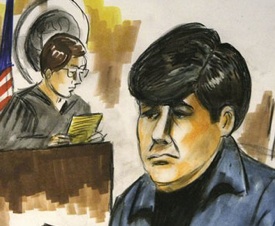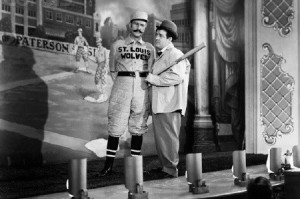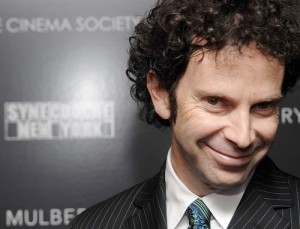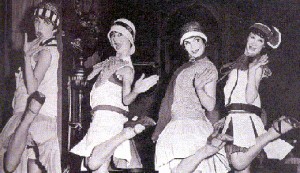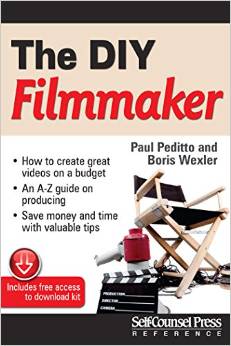I recently gave a lecture on dialogue at Chicago Screenwriter’s Network. Since 1995, CSN has provided an excellent resource for local screenwriters. Featured speakers have included Harold Ramis, Linda Seger, and Tim Kazurinski. Many thanks to Bethany Lape for having me, and for the work the good folks at CSN do in serving the Chicago screenwriting community.
Here are some thoughts on dialogue from the lecture…
Years ago, a connection in law enforcement gave me a wiretap transcript between The Ex-Governor of Illinois, Rod Blagojevich and the future Mayor of Chicago, Rahm Emanuel. If you want a taste of Chicago’s political corruption, have a read… I’ll wait.
What do you hear? F-bombs dropping as from two scotch-rocks Mamet salesmen. But what else? Did you hear the repetition, the rhythms, interruptions in that dialogue? How about the power dynamic? Pay-to-play politics, Chicago-style. This is verbal warfare. Both guys have agendas, they come in with wants and needs. Blago trying to, essentially, extort money for the Senate seat. Trying to say that without saying it. Rahm takes the call out of courtesy but wants nothing to do with the Governor. Each tries to control the call. Thus, is born conflict. Or, Orson Wells once said: Everyone has their reasons. Understanding who and what drives a scene—and the dialogue within the scene—will go a long way toward making your movie ring true.
Can you “teach funny”? Can writing dialogue, comedic or dramatic, be “learned”? Second City—the Chicago comedy institution—might have a thing or two to say on this subject. Tens of thousands have gone through their schooling. From John Belushi to Stephen Colbert, their success stories are too numerous to mention. So the answer would be yes, right?
It’s not an irrelevant question to ask: If tens of thousands of people went through Second City improvisational teaching, and hundreds now make their living at it: What about the thousands who aren’t making a living at it? They got the same training as the success stories, sooooo….? Not to get into the whole nature/nurture debate… I think we could agree that the theory of comedy can be taught; you can learn improvisation games, read endless books and become better by working the craft of comedy writing, but…how do I teach you, exactly, to write funny dialogue?
I sat in on a Comedy Guru’s traveling seminar a few months back. Among other lessons, he pointed out that comedy isn’t always Jack Black flailing arms and squealing as he chokes on a chocolate éclair. It’s the fact that his date doesn’t notice he’s in the process of croaking. In other words, her reaction. He then showed clips from Abbot and Costello to a David Cross skit that emphasized his point—yes, the laugh was in the reaction. Fine, got it, now what? He set up a writing exercise with a similar premise and had students write a 10-line scene. The seminar-folk wrote them and proceeded to read them. It’s being charitable to say they weren’t successful. Interestingly, he had given them the theory of it but, in the end: They still had to sit down and write the freakin’ scene! Alone!
If I can teach you to write comedy then I can teach you to write drama, the question is: Why do some people walk into the room Day 1 being able to write killer dialogue. Others give 1000%, work at it, work at it, and it never happens for them. Why?
If the craft of dialogue writing can be taught, what are some of things I’d recommend? How about starting with these:
Charlie Kaufman has two ears. So do Quentin Tarantino, Shane Black, Paul Haggis, and Diablo Cody—two ears. Here’s the good news: So do you. Writing dialogue is about hearing it. Write the scene. Now, read it. Does it sound natural? How can you tell? What I’m about to tell you is painful, but… You need to listen to people. On the subway, on the line at Target. What you’ll hear is that screenplay dialogue isn’t a regurgitation of real life speech. It’s a stylized recreation. Movie dialogue isn’t perfectly formed Noun/Verb sentences: It’s repetition, lost thoughts, rhythms, pacing, stuttering, political outlook, educational background, tension and release, subtext.
Good dialogue is imperfection. It works to fill the gap between character action and inner thought. It provides information that, for some reason, cannot find a visual solution. Dialogue serves story and character. Why are you in the scene? Can you say it without saying it—i.e.: find the visual solution. No? Fine, say it in dialogue. But find subtext. Don’t verbalize everything. Let the actor fill in the emotional gaps between words. Start by writing it, and then speak it back to yourself. Hear the words. Do you buy it? A cop talking about the trajectory of a bullet. An astronaut talking about a propulsion system. Not convincing? Write it again. Get specific. Write the same passage 10 times until it sounds passable. Then write it an 11th until it’s more than passable. Hear it.
Be a sponge. More good news: You’re on a subway, two people are talking and it’s…amazing. I mean genius. It’s ridiculous, demented, and sooo out there you could never have dreamed it up. Time to go into sponge mode. Drop everything and get the conversation down on paper. Can it be used for your screenplay? Unless they’re speaking a passage of an unpublished magnum opus, the words they just spoke—you just wrote them. Why do you own them? Because you recognized their genius, their divine absurdity. Truth is stranger than fiction. Write believable dialogue by tapping into real life conversations. Check out these OVERHEARD DIALOGUE examples. Could you have written these from scratch?
What, exactly, are you trying to say? I once went to a lecture by Judith Malina, co-founder of the Living Theater. You might know her as Grandmama in the original The Adams Family movie. She told us that, when beginning a project, she always asks herself: What is it I’m trying to say? Pretty basic thought, huh? How many of you do it though? Every scene you write, every line of dialogue, should move to say what you’re trying to say. If it’s a revenge tale, every Act 1 scene should set up the revenge, every Act 3 scene pays it off. Dialogue advances character or plot or it has no reason for being. But it should also have a thematic basis. Figure out what you need to say in the scene, say it, and get out.
The essence of you: What’s important? You, as God of the Realm, have a responsibility: A little piece of you should be in every character. How will that filter into dialogue? If what you write rings true to you, you stand a decent chance that the words will resonate with your audience. Example: If you had an abortion, and were writing a script where a character had to undergo a similar abortion experience, some piece of you would be in that scene. You could write it not just with authenticity but with an emotional POV that would strike a chord with audience members. Does the writer have to first-hand experience everything their characters do? Absolutely not. But you must come at dialogue with an understanding of what’s true to you. Get those feelings into dialogue and the story will ring true.
Research: Public Domain and the gathering of bullets: I wrote a 1921 stage adaptation of Ben Hecht’s A Thousand And One Afternoons In Chicago. The play was based on a book compilation of Hecht columns for the Chicago Daily News. Early on it occurred to me that the publisher had only used about a hundred of the 300+ articles Hecht wrote. So I wondered: What about the rest of the columns? This sent me hunting in the microfilm room at Harold Washington library Contrary to popular notion, there are some things that can’t be found in a Google search. Yes, I spent months hunch-backed over the broken down and antiquated microfilm machines at Harold Washington, but there was an upside. The 1921 Chicago Daily News material circa 1921 was public domain. Meaning I could use it—dialogue, scene ideas, characters—at no cost. Should anyone ask, of course I would attribute it to Hecht (as I do here)…but if it’s public domain, if you dig it out, you can adapt it.
Sure, I could have tried to create—from scratch—a scene with a 1921 Flapper-girl in the Green Mill nightclub. Or I could go to the pages of the Chicago Daily News, pull a story about the Green Mill with dialogue from the patrons who were in the club that night, and excerpt it for a scene I need. Out of dry and dusty microfilm Limbo springs forth “fresh” dialogue, and probably 10X better than anything I could have dreamed up.
The writer needs authenticity—the appearance of being an expert in matters in which he is not an expert. It’s not required but wouldn’t hurt the authenticity of your words if—before you write that spec Chicago Code episode–you actually ride with a Chicago cop for a day or two, or interview a Chicago cop for their POV. Research is critical for dialogue.
Example: You’re trying to write a scene with a cop talking about the trajectory of a .9mm bullet. You haven’t a clue about that subject. So, what to do? One word: Google. Google is a force of nature (a damn good spell-checker too!). It’s also a great way to add details about whatever subject you need. You can’t copyright single words. If you can’t ride with actual cops and ask them, ask Google. Root them specific wording, slap it into your writing for authenticity. And speaking of thievery…
Steal Well. “Bad artists copy, great artists steal.” –Picasso. It was one thing for a specific shade of red Picasso saw in someone else’s picture to turn up in his own paintings, but… I’m not actually advocating plagiarism, riiiiiight? As with everything else in life, it depends on interpretation. For instance, Tarantino. One of the great writer/directors of our time! How can people talk shit about him?! Tarantino a thief?! It’s nuts…
Or is it?
There is thievery and there is re-interpretation. One doesn’t have to be a plagiarist to steal well. Using someone’s concept but bending it for your own purposes, changing it enough to make it your own—that’s been done, and some of the culprits are American Film Institute Hall-Of-Famers, believe it. Steal well, but carefully, O ye hearts of larceny! And remember: You didn’t hear it from me!

